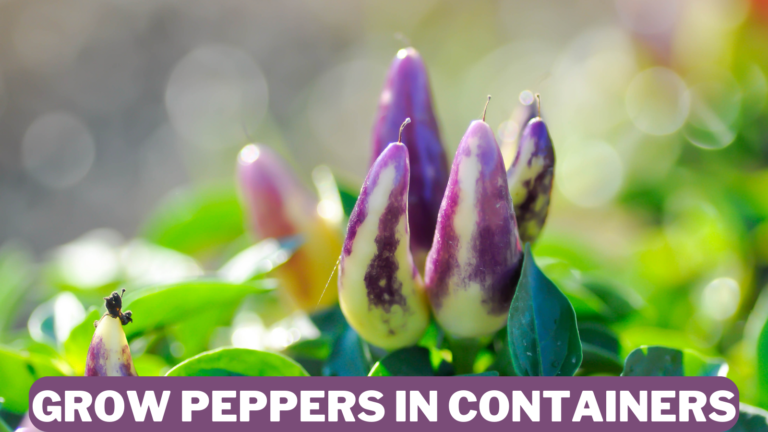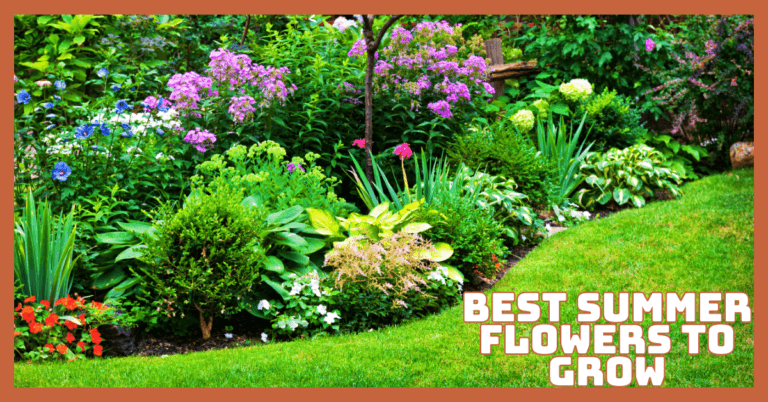How To Grow Wildflowers In Pots
How To Grow Wildflowers In Pots
How do you grow wildflowers in pots? Potting wildflowers is a simple and rewarding way to bring vibrant bursts of colour to your home, even in small spaces.
Wildflowers can thrive in containers with the right care, whether you have a sunny balcony, patio, or windowsill. This method allows you to enjoy the beauty of nature up close while supporting pollinators like bees and butterflies.
In this article, we’ll explain how to grow wildflowers in pots and create a flourishing mini-garden successfully.

Why Grow Wildflowers In Pots?
Growing wildflowers in pots offer a practical and creative way to enjoy nature's beauty, even in small or urban spaces. Here are some reasons why you should grow wildflowers in pots:
1. Space-Saving
Growing wildflowers in pots is perfect for those with limited space, such as apartment dwellers or small garden owners. Pots allow you to enjoy the beauty of wildflowers on a balcony, porch, or windowsill without needing a large outdoor area.
2. Easy Maintenance
Pots provide more control over essential factors like soil, water, and sunlight, making wildflower care easier. You can customize the growing conditions to suit your specific flowers, ensuring healthy growth with less effort than ground planting.
3. Portable Beauty
Containers offer flexibility, allowing you to move wildflowers to different locations for optimal sunlight or aesthetic purposes.
This mobility means you can easily rearrange your garden to fit the season or occasion, enhancing the overall appeal of your space.

4. Potted Wildflowers Attract Pollinators
Potted wildflowers attract beneficial insects like bees, butterflies, and even hummingbirds. By growing these flowers in pots, you create small but impactful pollinator-friendly zones, helping to support biodiversity and maintain a healthy, thriving ecosystem.
5. Seasonal Flexibility
Wildflowers in pots allow you to change your garden’s look seasonally. You can easily switch out varieties to suit different weather conditions or refresh your arrangement with new blooms throughout the year, ensuring a colourful and dynamic display all year round.
6. Pest Control
Growing wildflowers in pots helps reduce the risk of pests and diseases, as containers offer a more controlled environment than garden beds.
This minimizes exposure to soil-borne pests and allows easier plant health monitoring, protecting wildflowers from common garden threats.
7. Versatility
Pots let you experiment with different wildflower species and soil types, adapting to various climates and personal preferences.
Whether growing drought-tolerant plants or species that need specific nutrients, containers offer flexibility in crafting the perfect environment for your wildflowers to thrive.
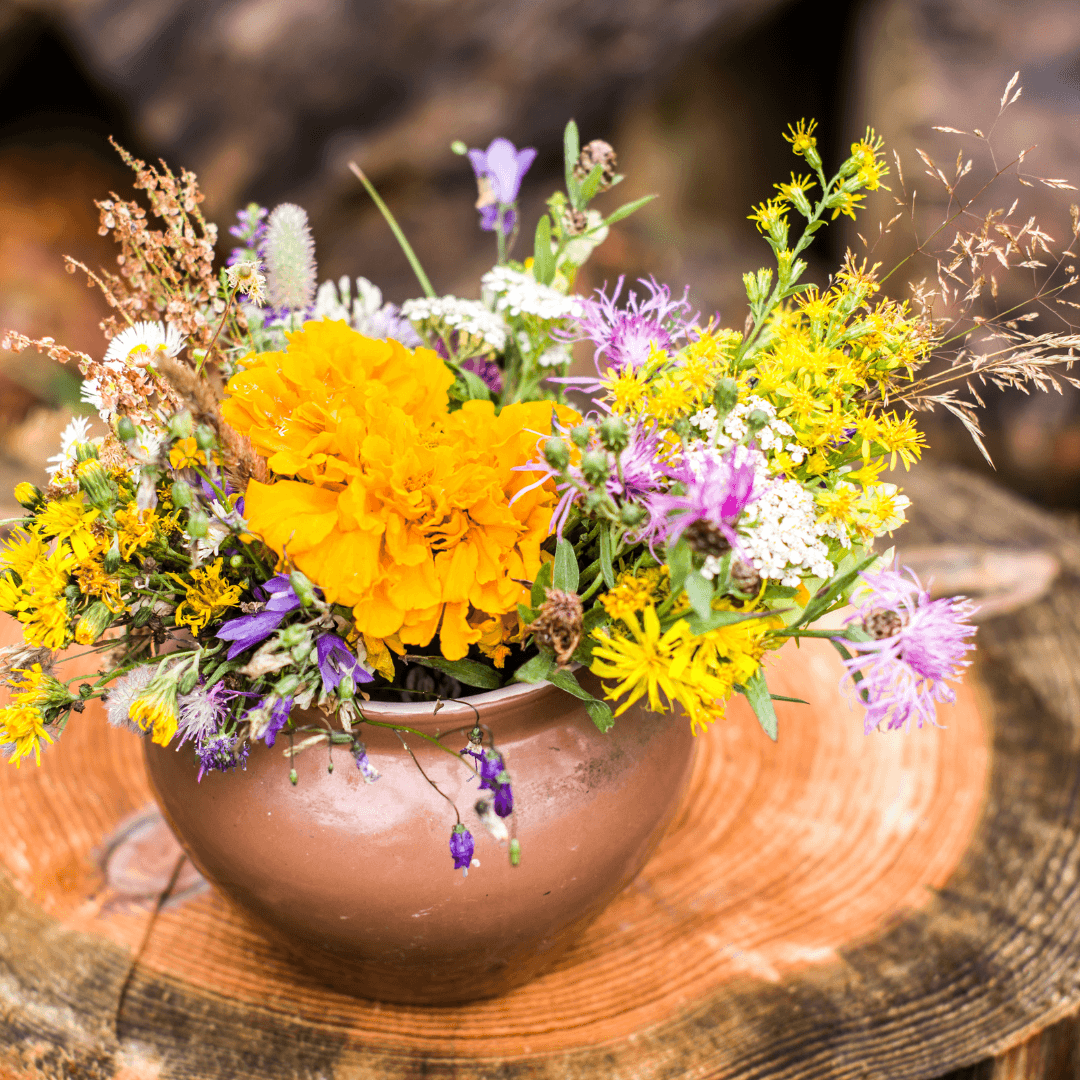
8. Creative Display
Potted wildflowers offer endless possibilities for artistic arrangement. Mix and match colours, sizes, and pot designs to create a visually stunning display.
This flexibility allows for customized layouts that enhance the aesthetics of your indoor or outdoor space, adding beauty and personality to your garden.
9. Enhanced Soil Quality
Pots let you use high-quality potting mixes, ensuring your wildflowers receive optimal nutrients. Unlike garden soil, which may vary in quality, container gardening gives you full control over the growing medium, providing better conditions for your plants to thrive, regardless of your local soil's limitations.
10. Less Weeding
Growing wildflowers in pots significantly reduces the amount of weeding required. Containers help prevent the spread of invasive weeds and facilitate identifying and removing undesired plants. This saves time and ensures that your wildflowers can flourish without resource competition.
Best Wildflowers For Pots
Wildflowers in pots bring vibrant colour, are easy to care for, and attract pollinators, making them perfect for enhancing any small outdoor space.
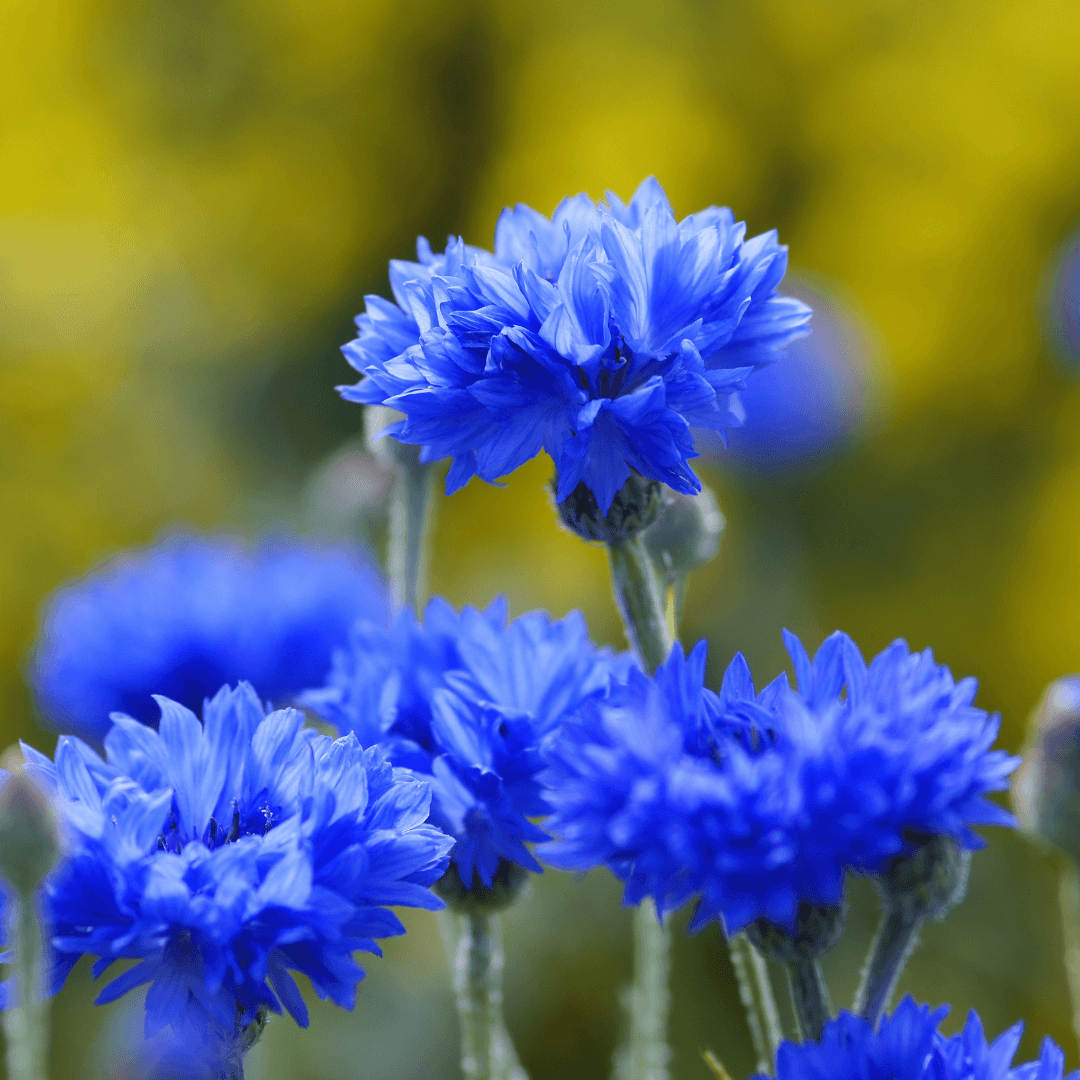
1. Cornflowers (Centaurea cyanus)
These easy-to-grow blue blooms reach about 12-36 inches. Cornflowers tolerate poor soil, thrive in full sun, and attract pollinators like bees and butterflies.
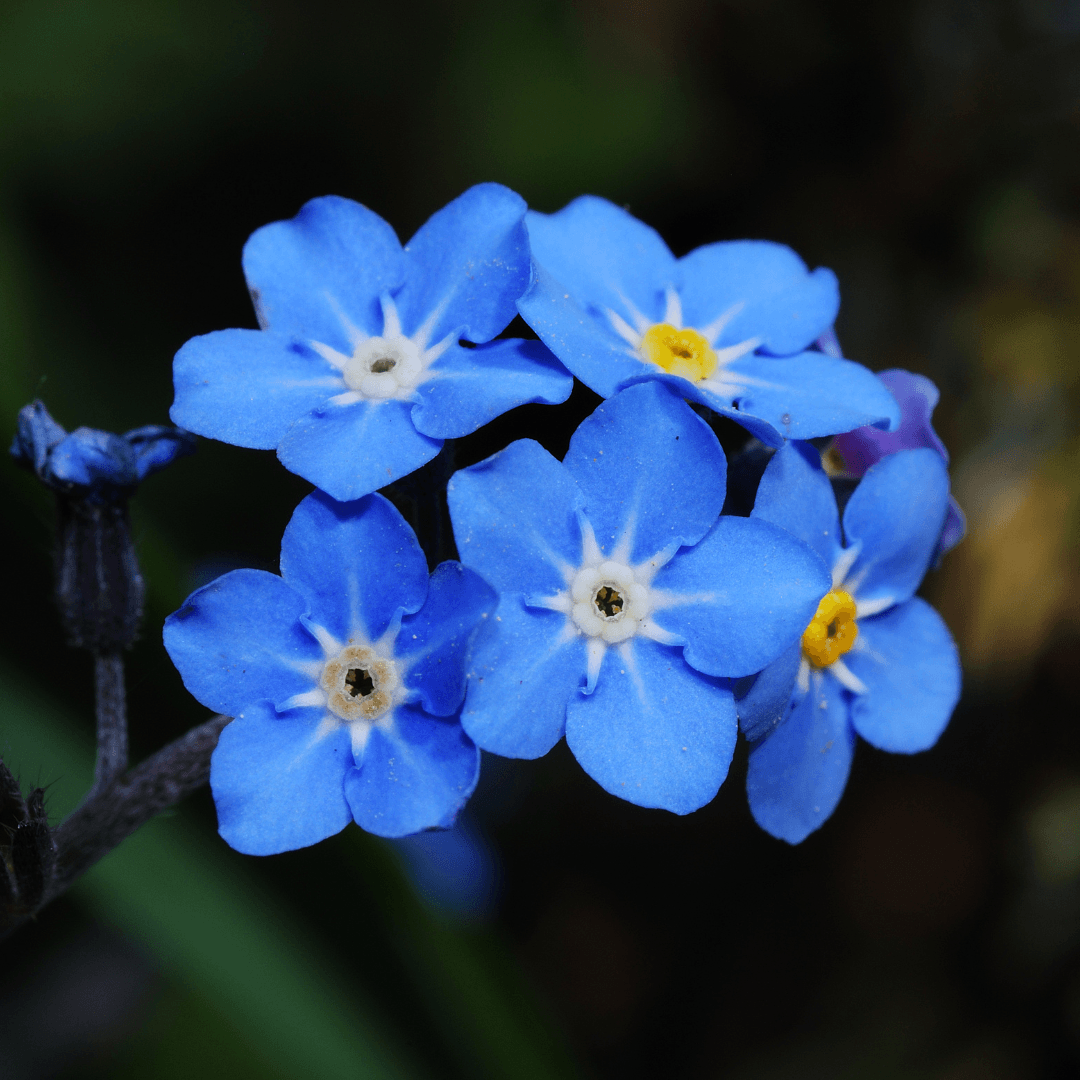
2. Forget-Me-Nots (Myosotis)
These delicate blue, pink, or white flowers are shade-tolerant and thrive in moist, well-drained soil. They bring a soft, cottage-garden feel to your container arrangements.

3. California Poppies (Eschscholzia californica)
California poppies have bright orange-yellow, drought-tolerant flowers that bloom all summer long. They are perfect for pots in warmer regions since they grow well in full sunlight and well-draining soil.
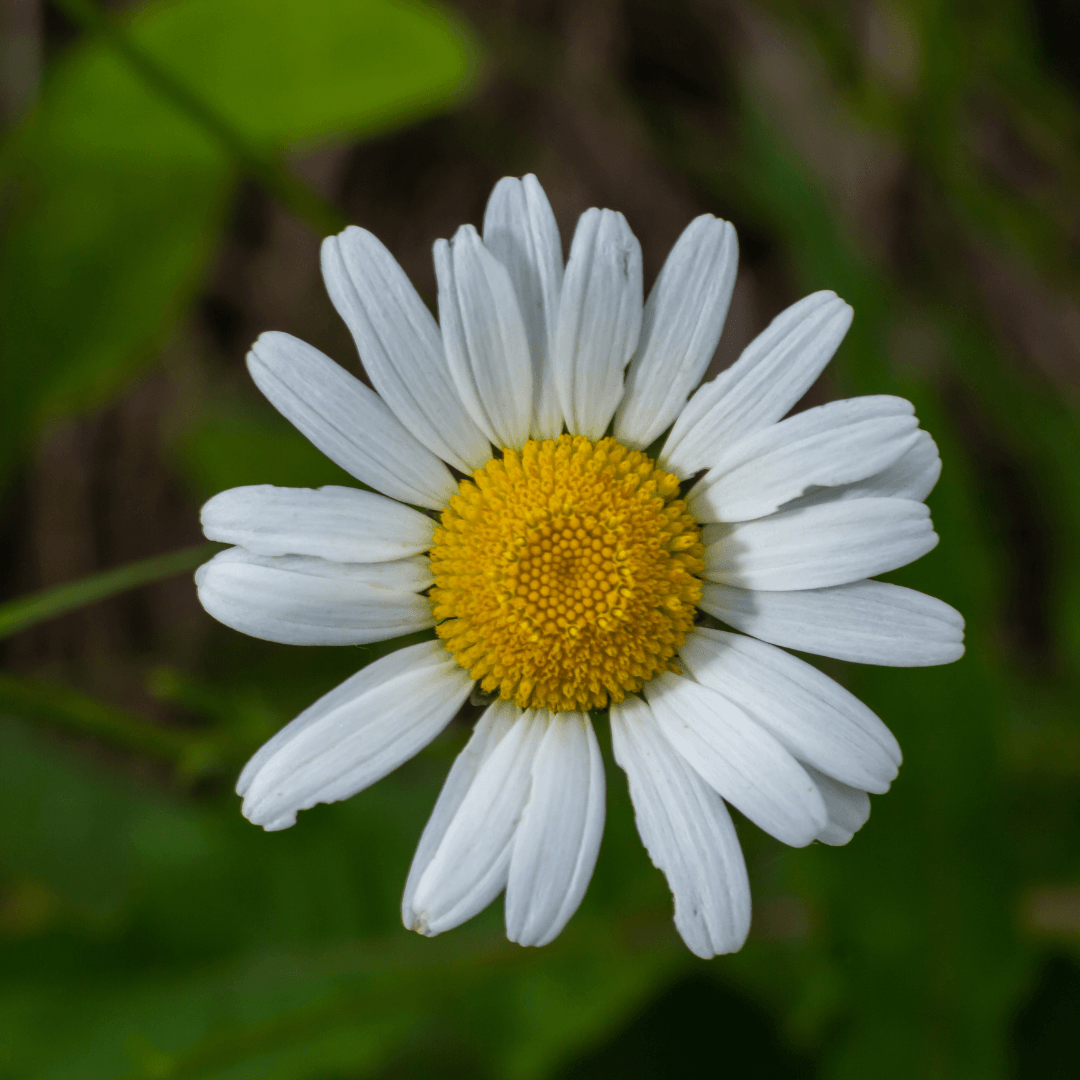
4. Oxeye Daisies (Leucanthemum vulgare)
These classic white daisies with yellow centers reach about 24 inches. They’re low-maintenance, tolerate partial shade, and attract pollinators, bringing cheerful blooms to your pot.
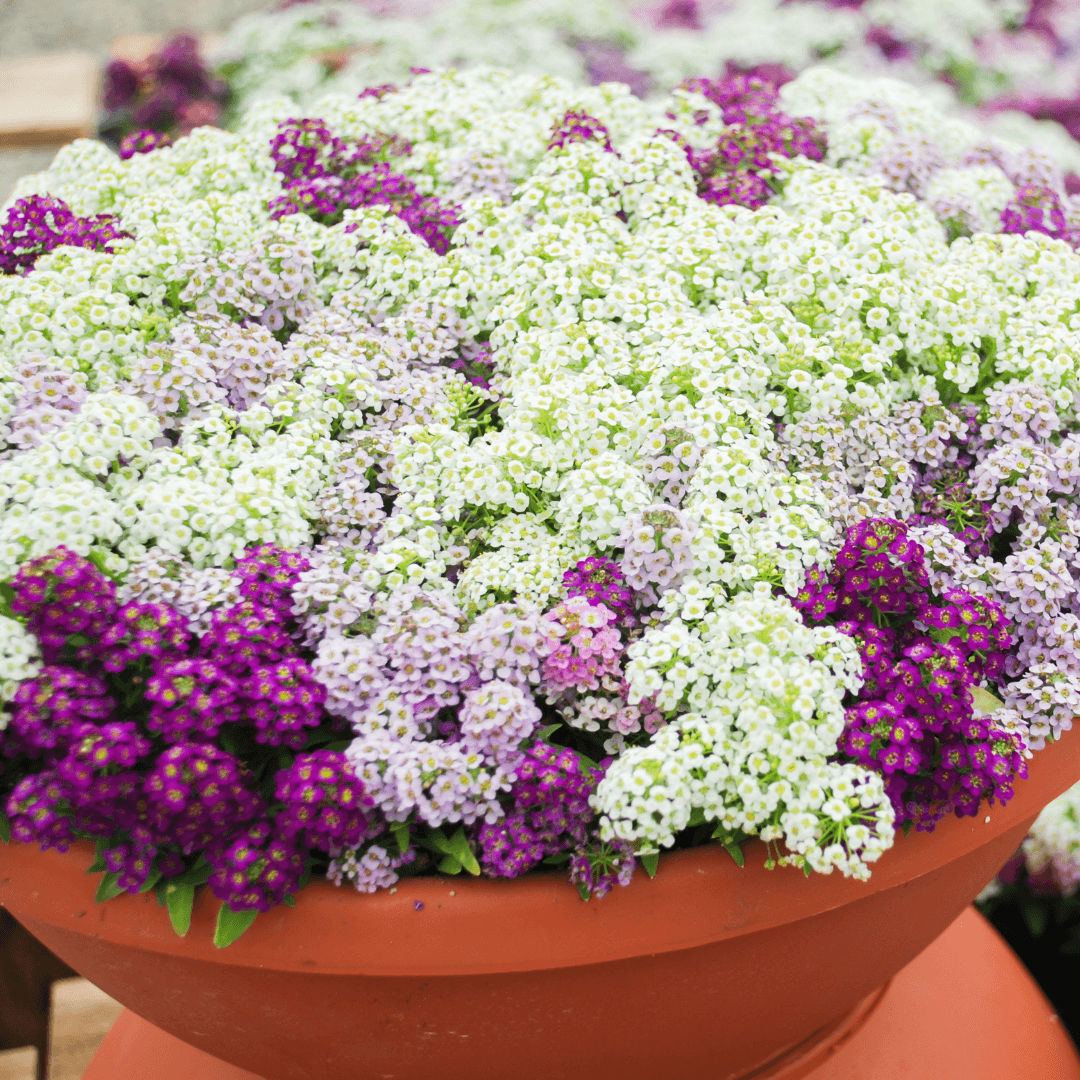
5. Sweet Alyssum (Lobularia maritima)
Sweet alyssum is a low-growing, cascading plant with tiny, fragrant white or purple blooms. It thrives in cooler climates and fills containers with dense coverage, making it perfect for pot edges.

6. Snapdragons (Antirrhinum)
Tall, vibrant spires of flowers in various colours. Snapdragons prefer full sun and well-drained soil, making them a colourful, vertical addition to potted gardens.
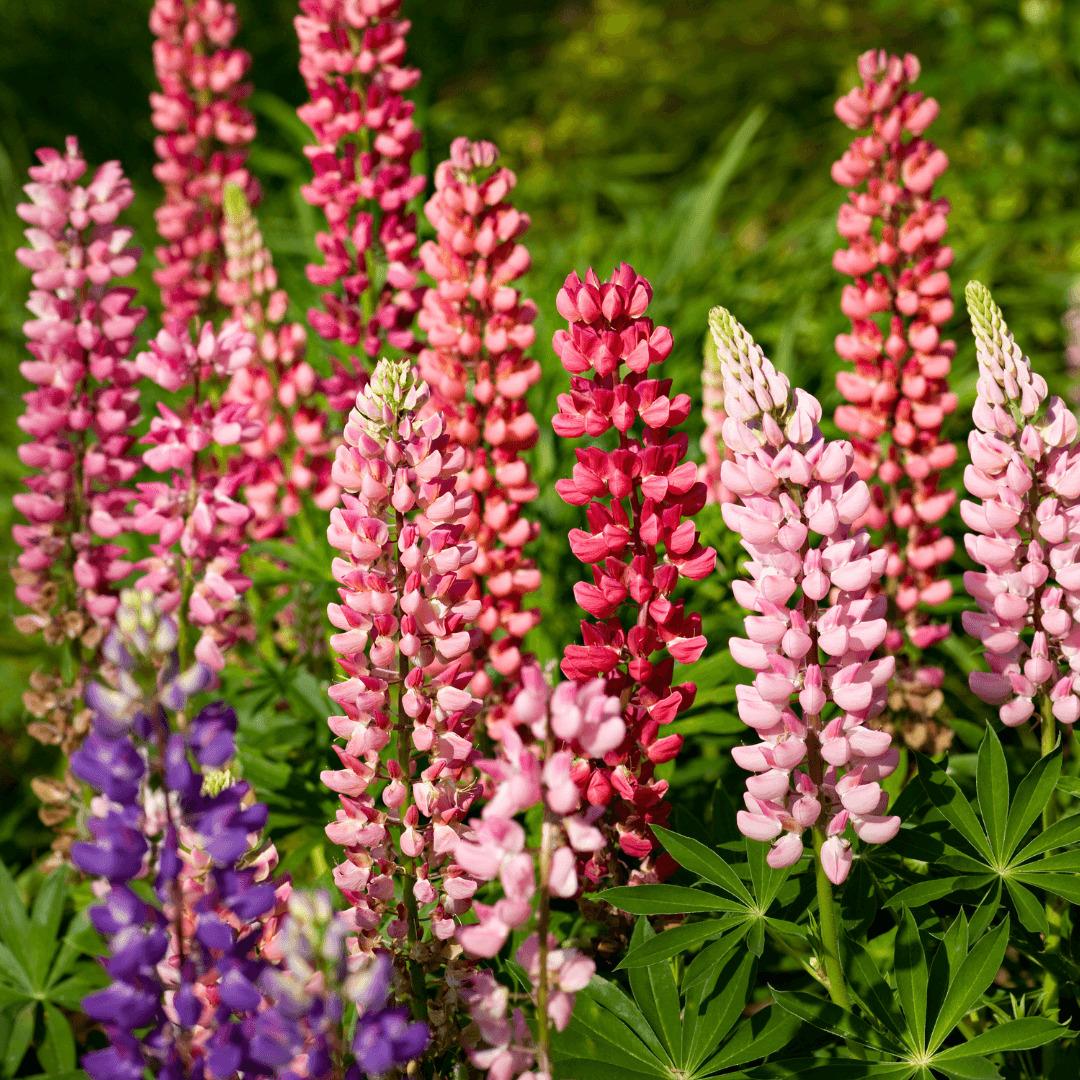
7. Lupines (Lupinus)
Eye-catching purple, blue, or pink spikes. Lupines thrive in full sun to partial shade and well-drained soil, adding height and structure to potted arrangements.

8. Coreopsis (Coreopsis tinctoria)
Coreopsis has sun-loving, daisy-like flowers in yellow, orange, or red. It is drought-tolerant, attracts pollinators, and blooms all season, providing continuous colour and beauty in containers.
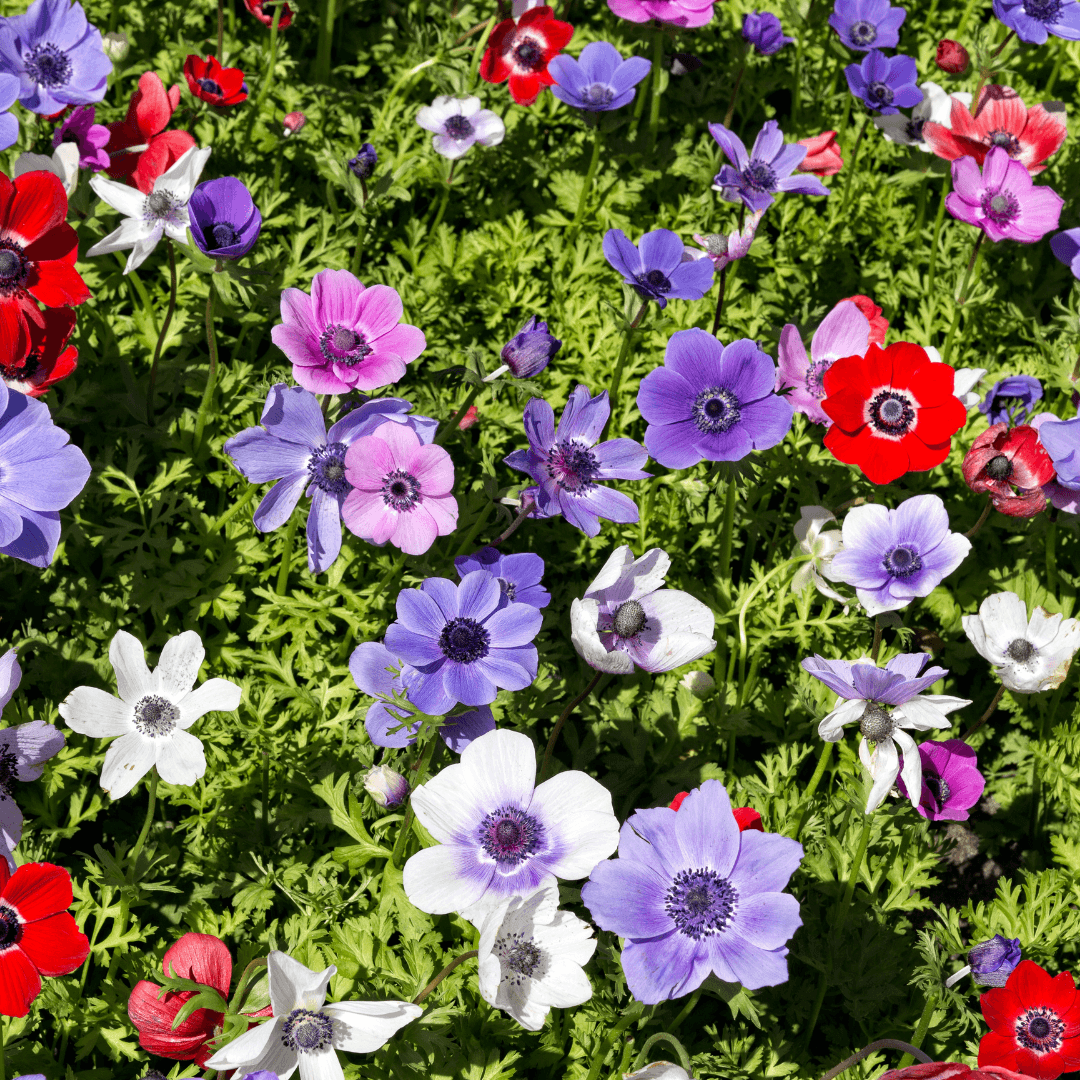
9. Anemones (Anemone coronaria)
Vibrant blooms in red, pink, and blue shades. These flowers thrive in well-drained soil and partial shade, bringing bold, colourful accents to potted arrangements.

10. Blanket Flower (Gaillardia)
Hardy, heat-tolerant flowers in red, orange, and yellow shades that bloom from early summer to fall. They are perfect for pots and attract bees and butterflies.

11. Bee Balm (Monarda)
Fragrant, tubular flowers in red, pink, or purple. Bee Balm thrives in full sun and moist soil, attracting hummingbirds and butterflies while adding vibrant colour to pots.
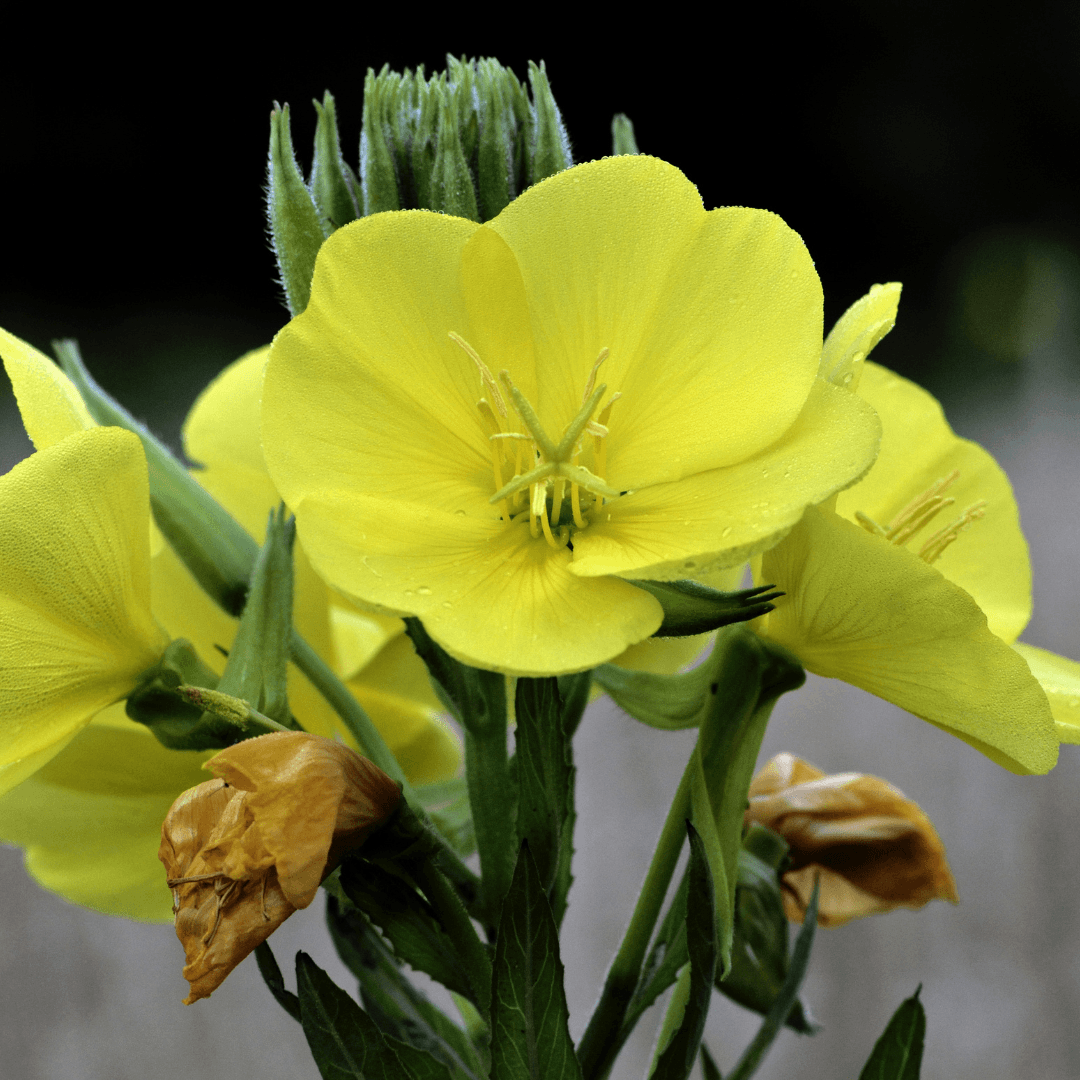
12. Evening Primrose (Oenothera)
These drought-tolerant plants prefer well-drained soil and full sun and bloom in the evening with delicate yellow flowers. They bring a sweet fragrance and cheerful brightness to containers.

How To Grow Wildflowers In Pots
Growing wildflowers in pots is a simple and rewarding process. Here’s a step-by-step guide to help you get started:
1. Create A Planting Schedule To Grow Wildflowers
Establish a planting schedule based on the growing season and the specific wildflower species you’re cultivating. Some wildflowers thrive in cooler temperatures, while others prefer warmth.
Timing your planting to align with ideal growing conditions ensures successful germination and flowering. Research the best planting times for your selected species to maximize their growth potential and floral display.

2. Choose The Right Pot To Grow Wildflowers
Ensure the pots you choose for your wildflowers have drainage holes to keep water from building up and damaging the roots. The pot size should correspond to the type of wildflowers you plan to plant.
Larger pots are ideal for deep-rooted species, allowing ample room for growth, while smaller pots are suitable for shallow-rooted varieties.
Additionally, consider the pot's material. Clay or ceramic can offer better breathability than plastic, further enhancing root health and overall plant vitality.
3. Select The Right Potting Mix For Your Wildflowers
Using a high-quality, well-draining potting mix is crucial for the success of your wildflowers. A good potting mix provides essential nutrients and aeration for healthy root development.
Composting can help the soil get even more enriched and better able to hold onto moisture without getting soggy. Avoid using garden soil, which can compact in pots, restricting root growth and potentially harbouring pests and diseases. Opting for a specialized wildflower or general-purpose potting mix will set a solid foundation for vibrant blooms.
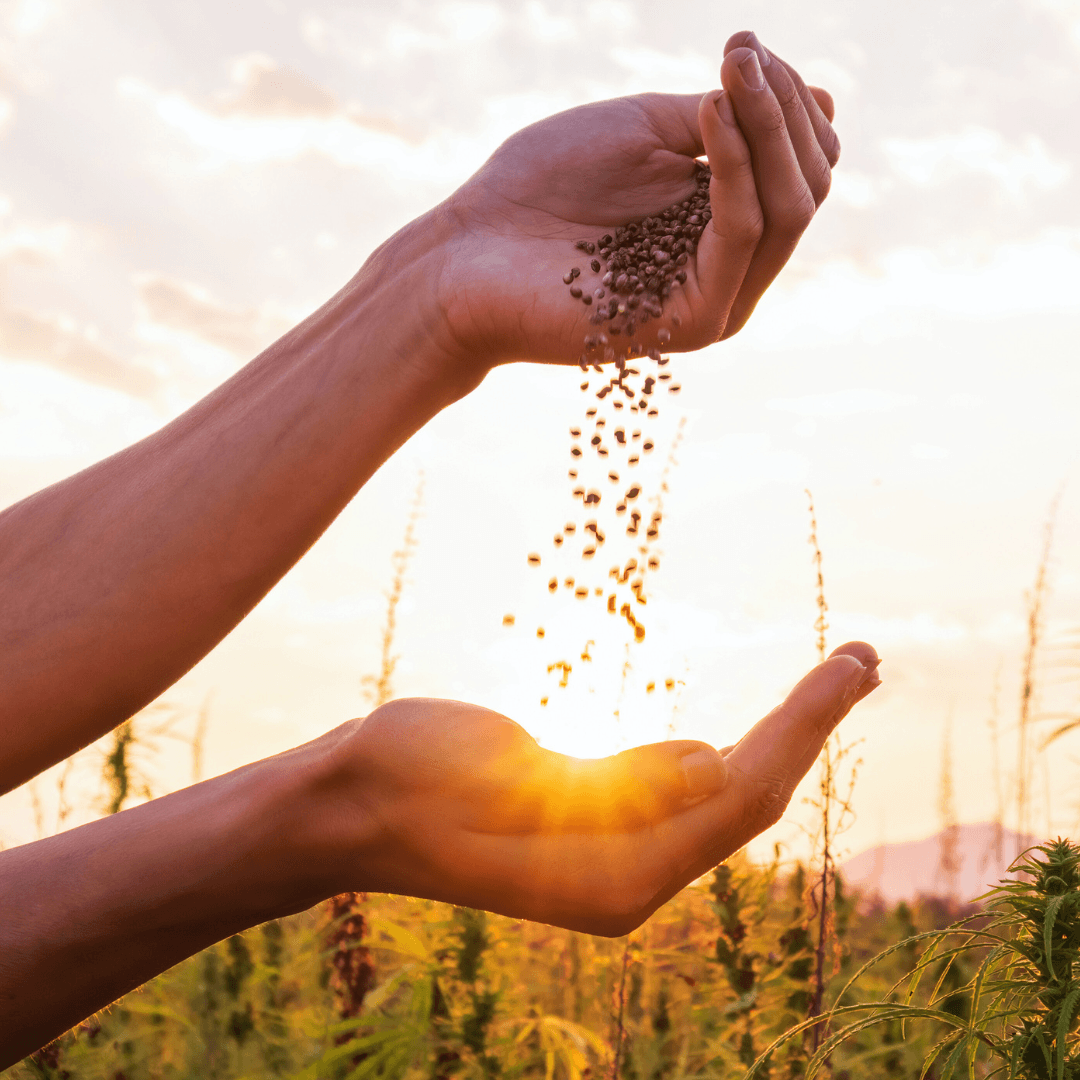
4. Pick The Right Wildflower Seeds
When considering how to grow wildflowers in pots, selecting the right wildflower seeds is essential for a flourishing container garden.
Select plants that will thrive in your area's temperature and amount of sunshine. For full sun, popular choices include bright poppies, cheerful daisies, and lovely cornflowers.
If your area receives partial shade, opt for shade-tolerant varieties like woodland phlox or violets. Native wildflowers are often the best choice, as they are adapted to local conditions, require less maintenance, and attract local pollinators, contributing to a thriving ecosystem.
5. Plant The Wildflower Seeds
To plant your wildflower seeds, lightly sprinkle them evenly across the soil surface. Gently press the wildflower seeds into the soil without burying them too deep, as most seeds require light for germination. Cover them with a thin layer of soil or compost to protect them while still allowing light penetration.
After planting, water gently to ensure the soil is evenly moist but not soaked, preventing any disturbance to the seeds. This careful planting process sets the stage for healthy growth and a beautiful display of flowers.
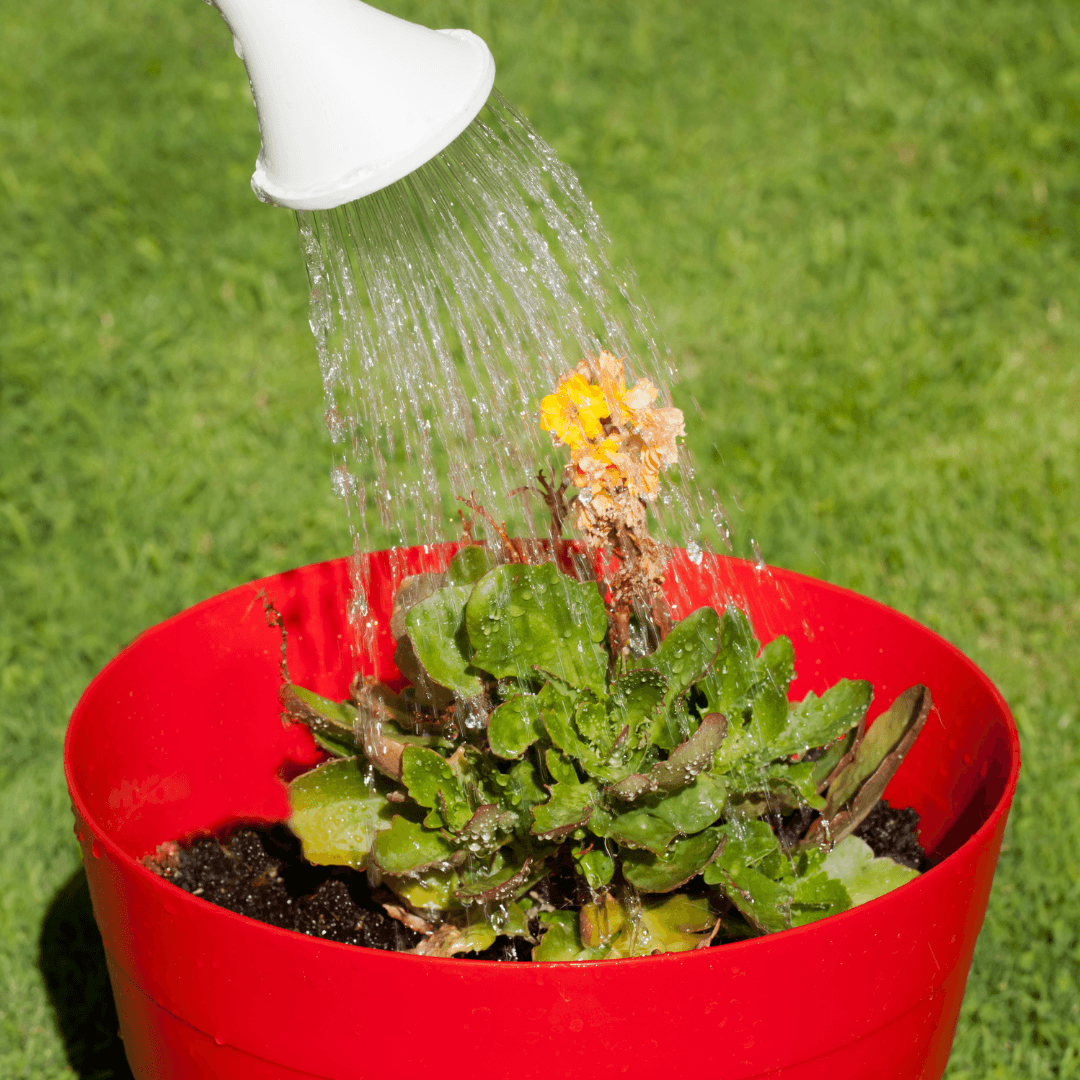
6. Water Your Potted Wildflowers Properly
Maintaining consistent moisture in the soil is vital for the health of your wildflowers. Water your pots regularly, especially during hot or dry spells, to keep the soil evenly moist but not soggy. Ensure excess water can drain through the pot's holes to prevent root rot, a common issue in container gardening.
Adjust your watering frequency based on the weather, the specific needs of your wildflower species, and the size of your pots. Regular monitoring will help you maintain optimal conditions for growth.
7. Place Your Potted Wildflowers In The Right Spot
Choosing the right location for your potted wildflowers is crucial for their success. Wildflowers need at least six hours of direct sunshine daily for brilliant blooms, as they flourish in full sun.
If you're growing shade-tolerant species, position your pots in areas that receive partial or filtered light. Consider factors like wind exposure and temperature fluctuations, which can impact growth.
Regularly assess the light conditions to ensure your wildflowers receive sunlight to flourish and thrive throughout the growing season.

8. Thin Out Your Wildflower Seedlings
As your wildflower seeds germinate, thinning out the seedlings is important to prevent overcrowding. This process involves removing the weaker or less vigorous seedlings, allowing the strongest ones to grow without competition for nutrients, water, and light.
Aim to space seedlings according to their specific growth requirements; this promotes healthier plants and enhances their ability to flourish.
Thinning also helps reduce the risk of disease and pests, resulting in a more robust and colourful display of wildflowers in your pots.
9. Regular Maintenance For Potted Wildflowers
Maintaining your potted wildflowers successfully requires regular care. Regularly remove spent blooms from your display to prolong the blooming season and promote new development to maintain its vibrancy.
Keep an eye out for pests such as aphids or spider mites, though potted wildflowers generally experience fewer pest problems than those in the ground.
Monitor for signs of disease, like yellowing leaves or wilting, and adjust your care routine accordingly. Regular maintenance ensures your wildflowers remain healthy and beautiful throughout their growing season.

10. Fertilize Your Potted Wildflowers Occasionally
It’s important to know that wildflowers usually require minimal fertilization to grow effectively in pots. However, a light application of slow-release fertilizer every few months can enhance growth, especially if your potting mix lacks nutrients.
Be cautious not to over-fertilize, as this can result in leggy plants with fewer blooms. A balanced approach will help maintain healthy foliage and vibrant flowers throughout the growing season.
11. Rotate The Pots For Even Growth Of Your Wildflowers
If your wildflowers are positioned in areas with uneven light exposure, rotate your pots every few days to ensure they receive consistent sunlight.
This practice encourages even growth and prevents the plants from leaning toward the light source. Regular rotation also helps your flowers develop strong stems and a balanced shape, contributing to a healthier appearance.
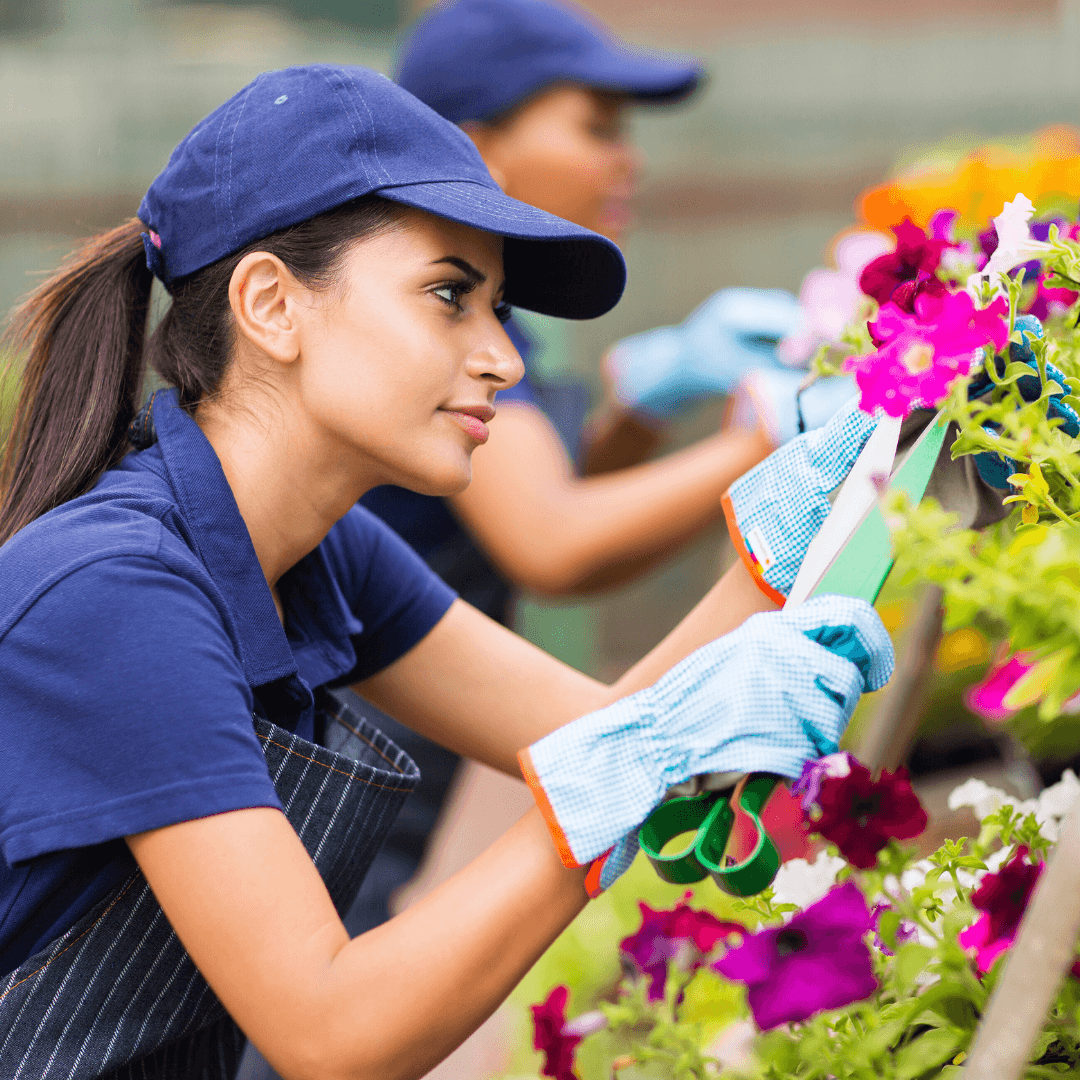
12. Prune And Trim Your Wildflowers As Needed
Wildflowers can grow rapidly under optimal conditions, so it’s essential to prune or trim them if they become too tall or unruly. Regular trimming keeps your pots looking neat and encourages fuller, bushier growth.
Removing excess foliage allows for better air circulation, reducing disease risk while promoting more blooms throughout the growing season.
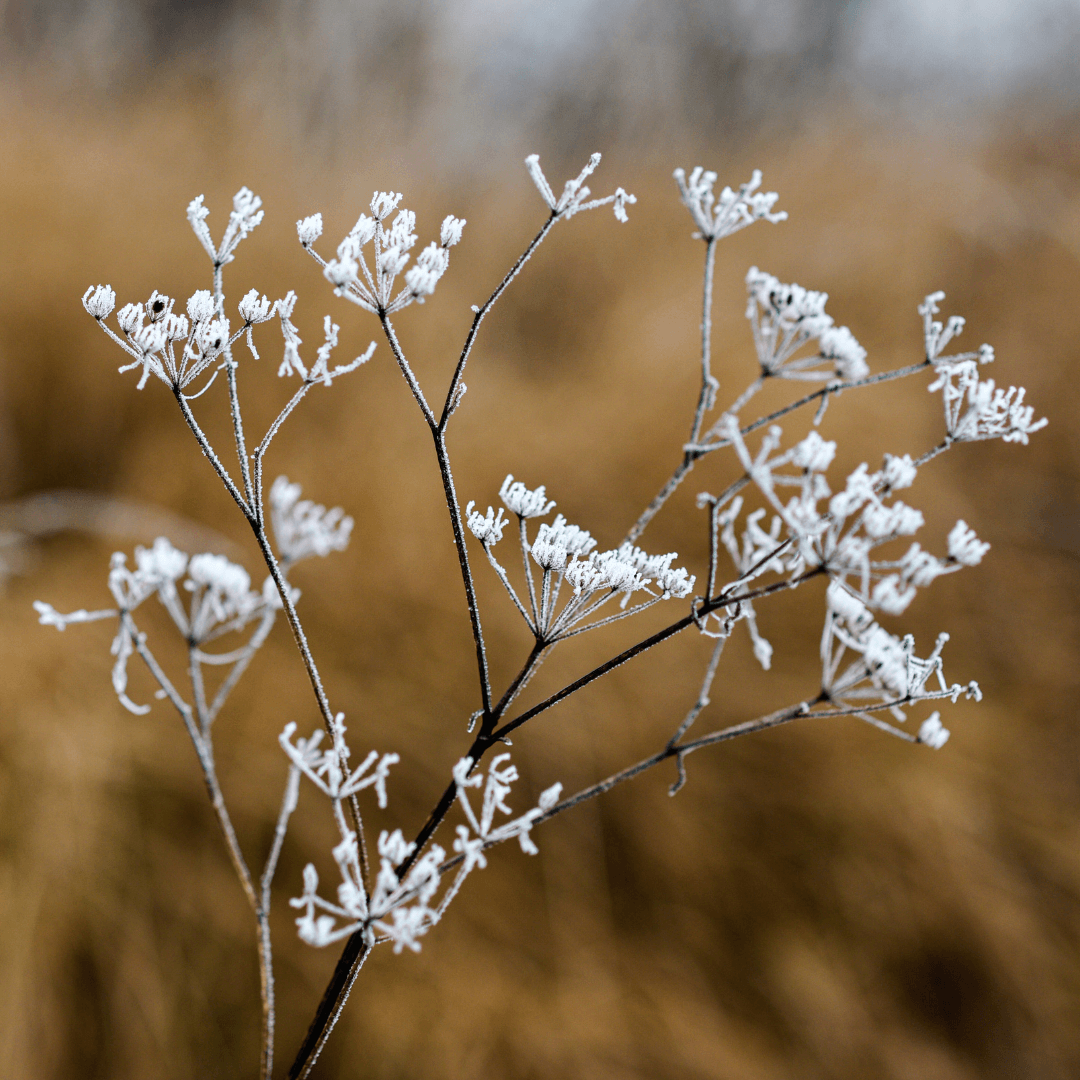
13. Overwintering Potted Wildflowers
Consider methods for overwintering perennials or cold-tolerant wildflowers. Move your pots to a sheltered area like a garage or porch during harsh weather.
Alternatively, mulch can insulate the soil and protect roots from freezing temperatures. This preparation can help your wildflowers survive the winter and thrive in spring.
14. Re-Pot Wildflowers When Necessary
As your wildflowers grow, they may outgrow their pots and require repotting into larger containers. Monitor their root development and transfer them as needed for continued growth.
When repotting, use fresh potting mix and handle the roots carefully to minimize stress. This keeps your flowers in a healthy atmosphere.
15. Mulch Your Potted Wildflowers For Moisture Retention
Mulch is a soil layer that helps regulate soil temperature, holds onto moisture, and prevents weed growth. Organic materials like straw or bark work well as mulch, breaking down over time to add nutrients to the soil.
This keeps the soil moist and reduces the watering frequency, making it easier to maintain your wildflowers, especially during hot or dry spells.
16. Choose Companion Plants For Your Wildflowers
Incorporating companion plants alongside your wildflowers can enhance their growth and overall health. Select plants that share similar light and water requirements to ensure compatibility.
In addition to deterring pests and drawing beneficial pollinators, companion plants can also shade vulnerable wildflowers.
This approach fosters a diverse and vibrant container garden while creating a harmonious ecosystem that supports your wildflower growth.
17. Monitor Your Potted Wildflowers For Pests And Diseases
Look for common pests that may affect your wildflowers, such as aphids, spider mites, or whiteflies. Check the stems and leaves frequently for indications of infestation.
If you see pests, use organic pest control products like neem oil or insecticidal soap to manage the situation. Quick intervention can shield your wildflower garden from harm and guarantee its ongoing health.
18. Enjoy The Benefits Of Your Wildflowers
Growing wildflowers in pots offers more than just visual appeal; they attract beneficial pollinators like bees, butterflies, and hummingbirds, creating a vibrant mini-ecosystem.
Enjoy the charming spectacle of wildlife visiting your garden while appreciating the natural beauty of your flowers. This interaction contributes positively to the environment and enhances your outdoor living space.

19. Experiment With Colour Combination
Wildflowers come in various colours, making creating stunning visual displays in your pots easy. Consider experimenting with various colour combinations to achieve a vibrant and dynamic look.
Pair contrasting colours for a bold statement or complementary shades for a more harmonious appearance. This creative approach allows you to express your style while enhancing the aesthetic appeal of your container garden.
20. Enjoy Seasonal Changes
To truly appreciate how to grow wildflowers in pots, embrace the seasonal changes as different species bloom at various times, providing a continuous display of colour and beauty throughout the growing season.
As other species bloom multiple times throughout the growing season, you can enjoy a constant display of colour and beauty.
Plan your planting to include early, mid, and late-blooming wildflowers for a staggered flowering effect. This seasonal variety keeps your garden looking fresh and attracts a diverse range of pollinators throughout the year.
FAQ
1. Are Wildflowers Easy To Grow?
Wildflowers are generally easy to grow, especially if you choose native species suited to your climate. They often require minimal maintenance and can thrive in various soil conditions.
2. Can You Grow Wildflowers In A Pot?
Absolutely! Wildflowers can be successfully grown in pots. Container gardening allows for greater soil, water, and sunlight control, making it ideal for small spaces or urban settings.
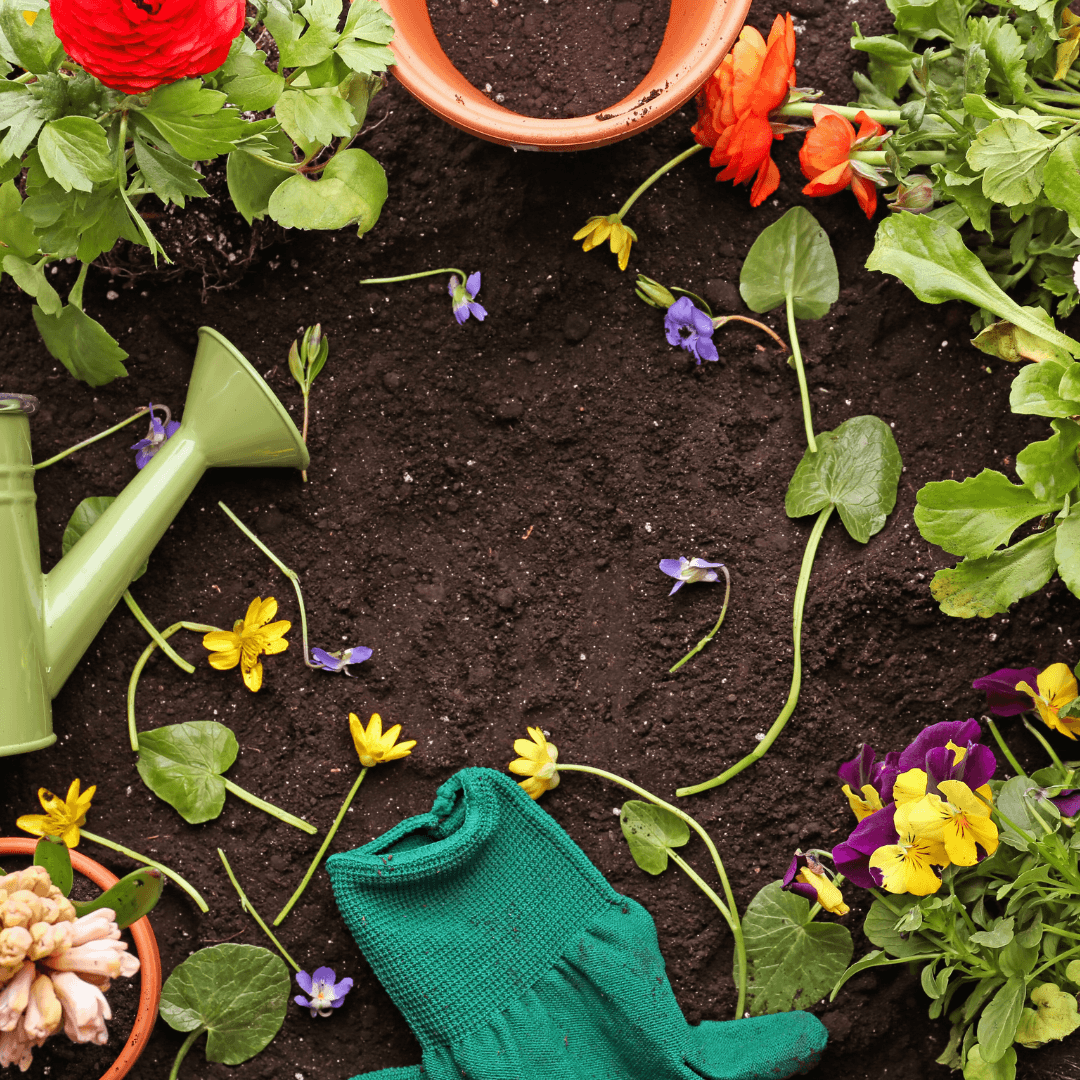
3. Why Are My Wildflower Seeds Not Growing?
Several factors can affect seed germination, including inadequate moisture, poor soil quality, insufficient light, or planting at the wrong time of year.
To ensure optimal growth, ensure you provide consistent moisture, use a good potting mix, and plant seeds according to their specific requirements.
Conclusion
By learning how to grow wildflowers in pots, you can transform any space into a vibrant oasis, enjoying a stunning display of colour and life throughout the seasons.
You can enjoy a spectacular display of wildflowers throughout the seasons by following simple steps—such as choosing suitable seeds and providing proper maintenance. Embrace the joy of container gardening and let your wildflower pots flourish!
Adopting this technique can open the door to new heights of health and tranquillity and a more colourful and harmonious life.
I trust you enjoyed this article on How To Grow Wildflowers In Pots. Please stay tuned for more blog posts soon. Take care!
JeannetteZ
>>>Please click here to read my all-inclusive article, About The Essential Companion Planting Guide<<<
>>>Please click here to read my all-inclusive article about Container Gardening<<<
>>>Are you interested in homegrown herbs and medicine? Please click here to find out more about it!<<<
Your Opinion Is Important To Me
Do you have thoughts, ideas, or questions? I would love to hear from you. Please leave me your questions, experiences, and remarks about this article, How To Grow Wildflowers In Pots, in the comments section below. You can also email me at Jeannette@Close-To-Nature.org.
Disclosure
This post may contain affiliate links. As an Amazon Associate and other affiliate programs, I earn from qualifying purchases at no extra cost to you. Please read my full affiliate disclosure.
You might also enjoy these blog posts:
The Power Of Sound Frequency Healing
How To Grow Prickly Pear Cactus
Complete Plant Propagation Techniques
Tips For Pitaya Growing In Your Backyard
Most Beautiful Birds In The World


